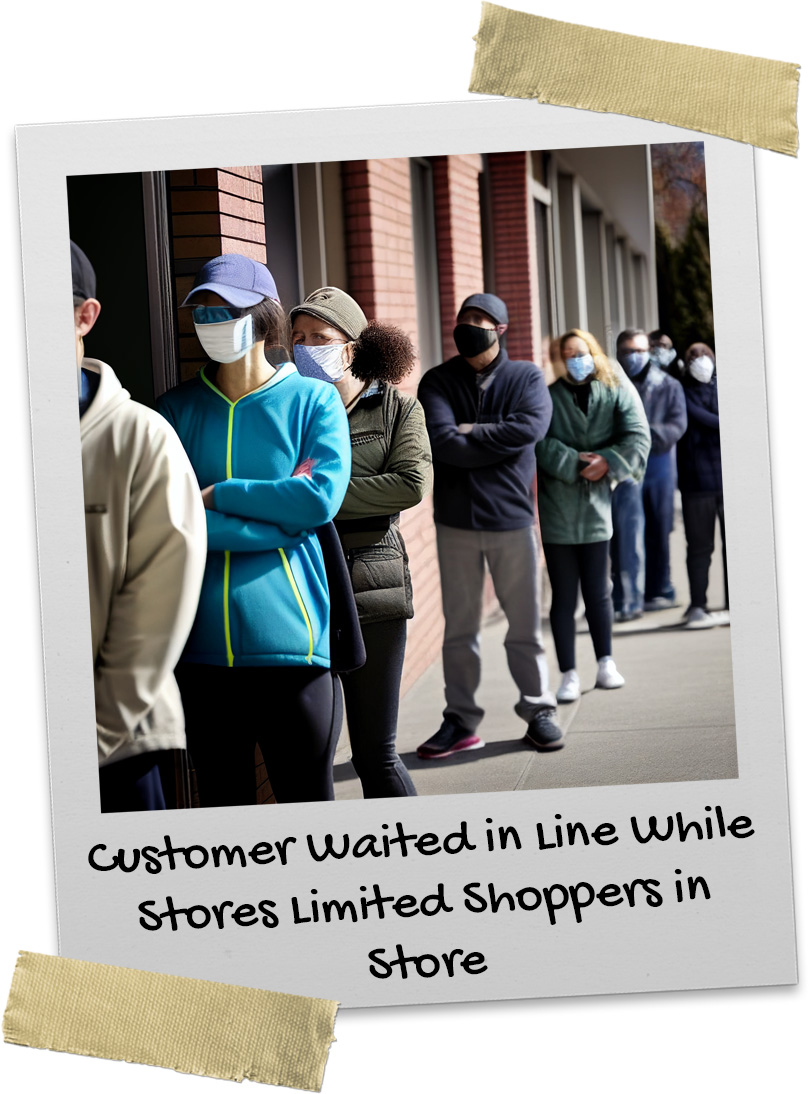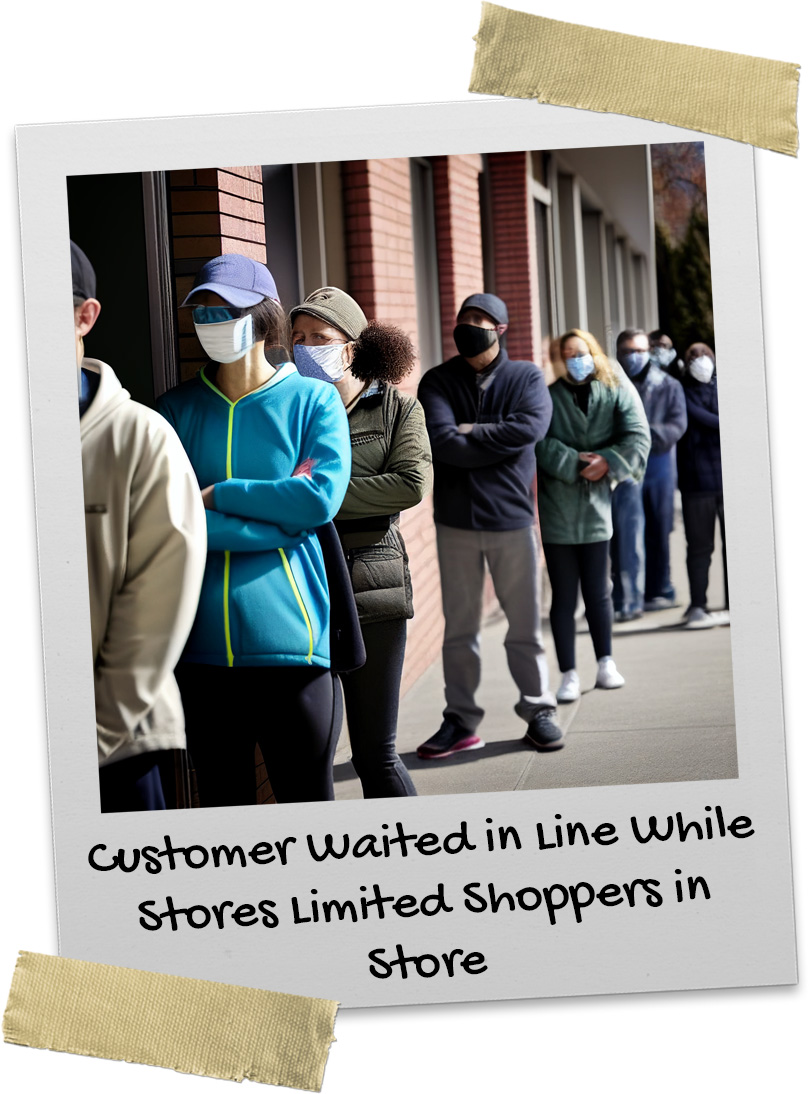Customer Waited in Line While Stores Limited Shoppers in Store


In the first week of April 2020, big retailers started to enforce customer limits to promote social distancing and reduce the spread of the virus, and to do everything they could to remain open.
Walmart and Target declared their intention to restrict the number of people allowed inside their stores at any given time as a measure to encourage social distancing. Both stores said they would meter the amount of guests inside and keep the capacity down to roughly 20 percent of each store’s capacity.
At each store, it was an employee’s job to stand outside the door with a clicker, and as one person left, another person could be admitted inside. The lines of people would spread out six feet apart along the building, and grow quite long during busy shopping times as people waited their turn to shop.
The virus was thought to spread more easily in crowded spaces, and limiting the number of people present at any given time would theoretically reduce the risk of transmission, while allowing the stores to stay open. The stores were looking out for their customers and their employees, but also the bottom line.
These policies trickled down to other stores that were allowed to remain operational. Some stores struggled to balance the need for social distancing with the need to keep their doors open and serve their customers. They had to find ways to manage lines and reduce the amount of time that people spent inside the store, which was not always easy.
At the same time, the customer limits also became a source of irritation and frustration for some people. They were a reminder of the barriers that had been put in place to keep us safe, and the ways in which we were all struggling to navigate this new normal. Some people found it inconvenient or annoying to have to wait in line or limit the amount of time they spent shopping, while others saw it as a sign of unnecessary paranoia or overreaction.



